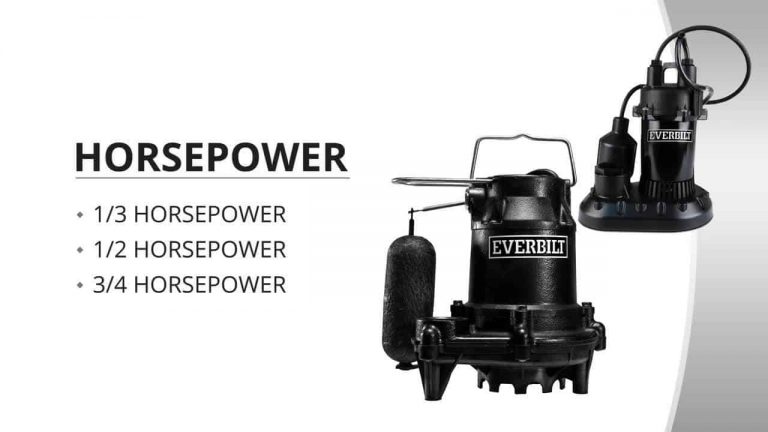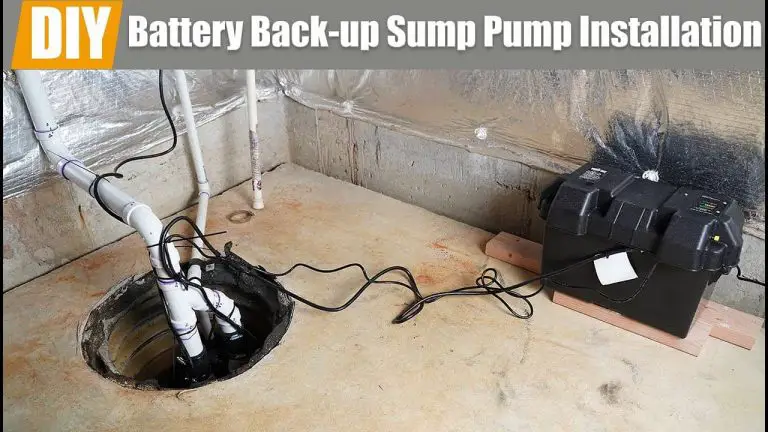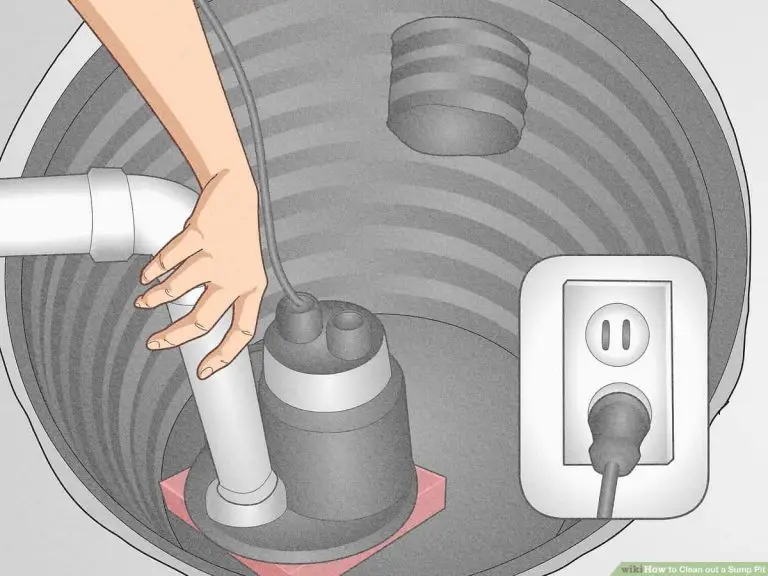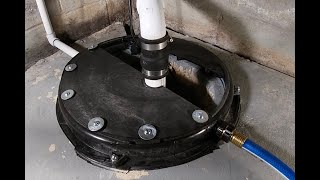How I Know I Need a Sump Pump
If you live in an area that experiences a lot of rain or if your home is prone to flooding, then you may need a sump pump. A sump pump is a device that pumps water out of your basement or crawlspace and prevents flooding. Here are some signs that you may need a sump pump:
-Your basement always feels damp or humid
-You have had water in your basement before
-Your basement has cracks in the walls or floor
- Check your basement or lowest level of your home for flooding during heavy rains or snow melts
- If you notice water seeping in or pooled water, it could be a sign you need a sump pump
- Inspect your foundation for cracks or leaks
- If water is seeping through the foundation, it can eventually lead to flooding in your basement or crawlspace
- A sump pump can help remove this water before it causes damage to your home
- Look for any signs of mold or mildew in your basement or crawlspace
- These can be indications that there is too much moisture in the air, which can lead to flooding and further mold growth if not remedied
- A sump pump can help reduce moisture levels and prevent future mold issues
- Test all window wells and drain pipes to ensure they are draining properly away from your home’s foundation
- If these are not draining properly, they can cause water build-up around your home which could lead to flooding inside your living space
6 Things Sump Pump Owners NEED to Know
How Do I Know If I Need a Sump Pump
If your home is built at or below the water table, there’s a chance you may need a sump pump. A sump pump is used to remove water that has accumulated in a sump basin – typically located in the basement of your home.
If you think you may need a sump pump, look for these telltale signs:
1. Water in your basement or crawlspace – Even if it’s just a little bit of water, this is a sign that groundwater is seeping into your home. If left unchecked, this can lead to serious structural damage.
2. Musty smells – This could be an indication of mold or mildew growth, which often occurs when there’s too much moisture in the air.
Not only is this bad for your health, but it can also cause serious damage to your home over time.
3. Staining on walls or floors – If you notice any staining on the walls or floors of your basement, it’s likely due to water seepage. In some cases, this can also lead to efflorescence (a powdery white substance) on surfaces like concrete block walls.
4. Cracks in foundation – If you see any cracks in your foundation, it’s important to have them repaired as soon as possible. Small cracks can turn into big ones over time and allow water to enter your home more easily.
Does My House Need a Sump Pump
If you live in an area with a high water table, your home may be at risk for flooding. A sump pump is a device that helps to remove water from the soil around your foundation and prevents it from entering your basement or crawl space.
There are two types of sump pumps: submersible and pedestal.
Submersible pumps are installed below ground level, while pedestal pumps are mounted above ground. Both types of pumps are effective at keeping your basement dry, but submersible pumps are less likely to be damaged by flooding.
If you’re not sure whether or not your home needs a sump pump, consider these factors:
• The age of your home: Older homes are more likely to have problems with water seepage than newer ones. If your home is more than 50 years old, it’s a good idea to have a sump pump installed.
• The condition of your foundation: If you have cracks in your foundation or other signs of damage, water may be able to enter your basement even without heavy rains or a high water table.
In this case, a sump pump can help to prevent serious damage.
Avoid House With Sump Pump
If you’re looking to avoid a house with a sump pump, there are a few things you can keep in mind. For starters, sump pumps are typically found in homes that are located in low-lying areas or flood zones. So, if you’re not interested in living in an area that’s prone to flooding, you can simply rule out any homes with sump pumps.
Additionally, sump pumps require regular maintenance and can be quite noisy when they’re running. So, if you’re not interested in dealing with the hassle of maintaining a sump pump or being kept up at night by its noise, you can also rule out any homes with this type of system.
Who Needs a Sump Pump
A sump pump is a device that is installed in the basement of a home. Its purpose is to remove water that has accumulated in the sump pit, which is the lowest area in the home where water can collect. The water is typically pumped out of the home and away from the foundation to prevent flooding and damage.
There are two types of sump pumps: submersible and pedestal. Submersible pumps are designed to be placed inside the sump pit, while pedestal pumps are designed to sit outside of it. Both types of pumps work by using an electric motor to create suction that pulls water up through a pipe and then pushes it out of the home.
Sump pumps are typically used in homes that are located in flood-prone areas or have poor drainage systems. They can also be used in homes with basements that frequently experience wetness or leaks. Homeowners who have had significant flooding problems in their basement may also opt to install a sump pump as a precautionary measure.
Sump Pump Alternatives
When it comes to sump pumps, there are a few alternatives that you may not have considered. Here are a few of the most popular sump pump alternatives on the market today:
1. Battery Backup Sump Pump – This type of sump pump is ideal for those who live in areas that experience power outages on a regular basis.
A battery backup sump pump will keep your basement dry even when the power is out.
2. Water Powered Sump Pump – This type of sump pump is powered by water pressure, making it an eco-friendly option. Water powered sump pumps are also very reliable and can run for years without any issues.
3. Solar Powered Sump Pump – This type of sump pump is powered by solar panels, making it a great eco-friendly option. Solar powered sump pumps are also very reliable and can run for years without any issues.
How Does a Sump Pump Work
A sump pump is a device that is installed in the basement of a home. It is used to remove water that has accumulated in the sump pit. The water is typically pumped out of the home and into a drain or sewer system.
Sump pumps are used to prevent flooding in homes that are located in areas where there is a high water table. They are also used to protect homes from sewage backup. Sump pumps can be either pedestal or submersible type.
The most common type of sump pump is the submersible type. This type of pump is submerged in the water that has accumulated in the sump pit. The submersible pump has an impeller that helps to move the water out of the pit and into a discharge pipe.
Sump pumps typically have two float switches. The first float switch turns the pump on when the water level reaches a certain point. The second float switch turns the pump off when the water level drops below another point.
Do I Need a Sump Pump Reddit
A sump pump is a device that is used to remove water from an area. This can be done by either draining it away or by pumps that push the water up and out of the area. Sump pumps are often used in basements or crawlspaces to prevent flooding.
If you live in an area where there is a high water table, your basement is below ground level, or if you experience frequent flooding, then you may need a sump pump. A sump pump will help to protect your home from water damage by keeping the water level below the floor level.
There are two types of sump pumps: submersible and pedestal.
A submersible pump is designed to be placed inside a pit that has been dug in the floor of your basement or crawlspace. The pedestal pump sits outside of the pit and uses a float switch to turn on and off as needed.
Sump pumps can be powered by either electricity or battery backup power.
If you live in an area where power outages are common, then battery backup power is essential. Battery backup power will keep your sump pump running even when the electricity goes out.
If you think you may need a sump pump, talk to a professional contractor who can assess your needs and recommend the best type of sump pump for your home.
Portable Sump Pump
If you live in an area that is prone to flooding or your home has a basement, then you know the importance of having a sump pump. A sump pump is a device that is used to remove water that has accumulated in a sump pit. This type of pump is usually installed in the lowest part of your home, such as the basement, and it works by pumping water out of the pit and away from your home.
There are many different types of sump pumps on the market, but one of the most popular options is the portable sump pump. As its name suggests, a portable sump pump can be easily moved from one location to another, which makes it ideal for those who need to regularly relocate their pumps or for those who want the flexibility to use their pump in multiple locations.
Portable sump pumps are typically powered by batteries, so they can be used even if there’s no power available.
And because they’re small and lightweight, they’re easy to store and transport – making them a great option for emergency situations.
If you’re considering purchasing a portable sump pump, there are a few things you should keep in mind. First, make sure to select a model that is appropriate for the size of your pit.
Second, consider how often you’ll need to use the pump and choose one with enough battery power accordingly. Finally, think about where you’ll be using the pump and make sure it will fit comfortably in that space.
With so many benefits, it’s no wonder why portable sump pumps are becoming increasingly popular.
If you think this type of pump might be right for you, do some research and find a model that fits your needs.
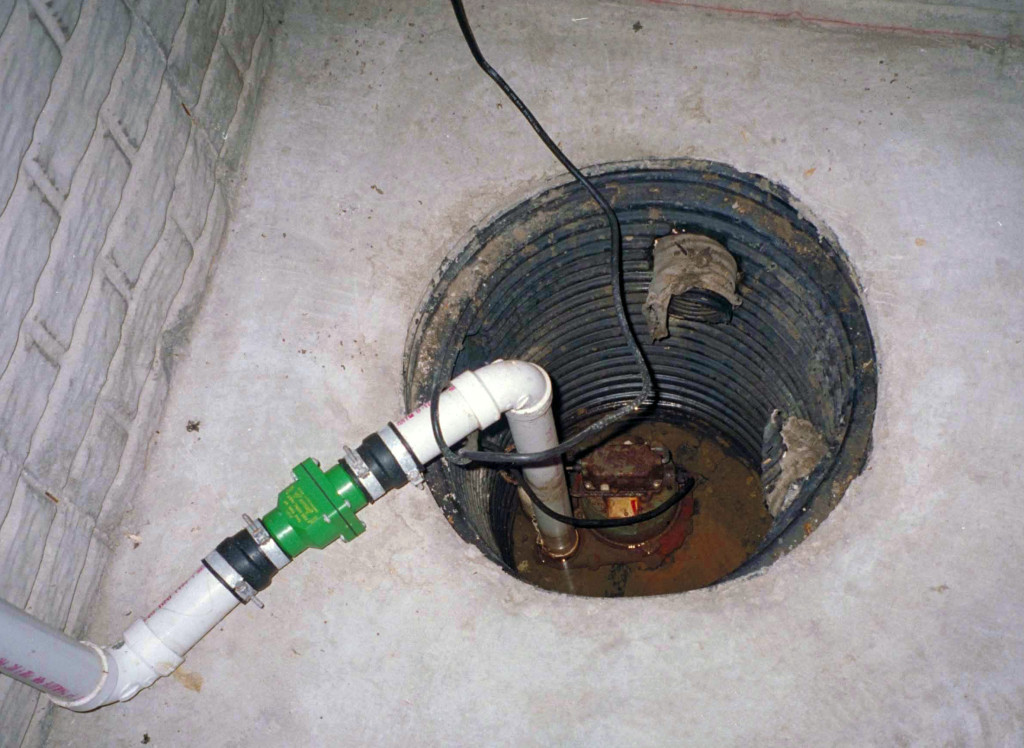
Credit: intekclean.com
Why Would I Need a Sump Pump?
If you live in an area that’s prone to flooding or has a high water table, you may need a sump pump to keep your basement dry. A sump pump is a pumps that sits in a pit (or “sump”) and pumps water out of your basement before it can enter through the floor or walls.
Sump pumps come in two different types: pedestal and submersible.
Pedestal sump pumps have the motor above the pit, which makes them easier to service but also more likely to be damaged by flooding. Submersible sump pumps sit inside the pit, which protects them from floodwaters but makes them harder to service.
Most sump pumps are powered by electricity, although there are also battery-powered and water-powered models available.
If you lose power during a storm, a battery-powered or water-powered sump pump will still be able to operate and keep your basement dry.
If you’re considering installing a sump pump, talk to a professional about which type would be best for your home and what size pump you’ll need.
When Should I Worry About Sump Pump?
There are a few key things to keep in mind when it comes to your sump pump. First, if you live in an area with a high water table or are prone to flooding, your sump pump is working overtime and you should keep a close eye on it. Second, even if you don’t live in a flood zone, heavy rains can overload your sump pump and cause it to fail.
Third, if you have a power outage, your sump pump will not be able to do its job.
If any of these scenarios apply to you, it’s important to know when to worry about your sump pump. If you notice that your basement is starting to flood or the water level in your sump pit is rising rapidly, this is a sign that your sump pump is struggling and needs attention.
If you hear strange noises coming from your sump pit or see water spilling out of it, this is also cause for concern and means that you should check on your sump pump right away. Lastly, if there is no power running to your home, assuming that your municipality has not shut off power due to flooding (in which case all bets are off), then this means that your backup battery powered sump pump will not be able kick in – so make sure you know where yours is located and how often to test the batteries!
Should Every Basement Have a Sump Pump?
Almost every basement can benefit from having a sump pump. Sump pumps are designed to remove water that has accumulated in a sump basin, typically located in the lowest point of your basement. When the pump kicks on, it sends the water up and out of the home through a discharge pipe.
There are several reasons why you might want to consider installing a sump pump in your basement:
To prevent flooding: A sump pump will help to keep your basement dry by removing any water that has seeped in or accumulated. This is especially important if you live in an area with a high water table or are at risk for flooding.
To reduce humidity: Even if your basement doesn’t flood, excessive moisture can lead to mold and mildew growth. A sump pump can help to reduce humidity levels in your basement by removing any standing water.
To improve air quality: Excess moisture in your home can also lead to musty odors and poor air quality.
By keeping your basement dry, a sump pump can help improve the air quality throughout your entire home.
Should I Be Worried If a House Has a Sump Pump?
If you’re considering purchasing a home that has a sump pump, you may be wondering if you should be worried about any potential problems that could come along with it. While sump pumps can occasionally cause issues, they’re generally not something to worry about too much. Here’s what you need to know about sump pumps and whether or not they’re cause for concern.
What is a Sump Pump?
A sump pump is a pump that is installed in the lowest point of a home’s foundation in order to remove water that has accumulated there. This water typically comes from rain or melting snow that seeps into the ground around the foundation and then collects in the low-lying area.
The sump pump kicks on automatically when water levels get too high and pumps the water out of the home and away from the foundation to prevent flooding.
Do Sump Pumps Cause Problems?
Like anything else in your home, sump pumps can occasionally have problems.
The most common issue is simply that the pump wears out over time and needs to be replaced – typically every 5 to 10 years depending on how often it’s used. Other issues can include clogged intake screens, frozen discharge lines, or electrical problems. However, as long as you keep up with regular maintenance on your sump pump, it should give you little trouble throughout its lifespan.
Should I Worry About a House With a Sump Pump?
No, you shouldn’t necessarily worry about purchasing a home that has a sump pump already installed. In fact, having a sump pump can actually give you some peace of mind knowing that your basement is at less risk of flooding due to excess water accumulation.
Conclusion
A sump pump is a device that is used to remove water that has accumulated in a water-collecting sump basin, typically found in the basement of homes. The water is pumped out of the sump basin and away from the home. Sump pumps are used to prevent basement flooding and to reduce the risk of mold and mildew growth.
There are a few signs that indicate you may need a sump pump, such as: water in your basement or crawl space; pooling water around your foundation; or, if you live in an area with high groundwater levels. If you have any of these signs, it’s important to get a professional inspection to determine whether or not you need a sump pump.


